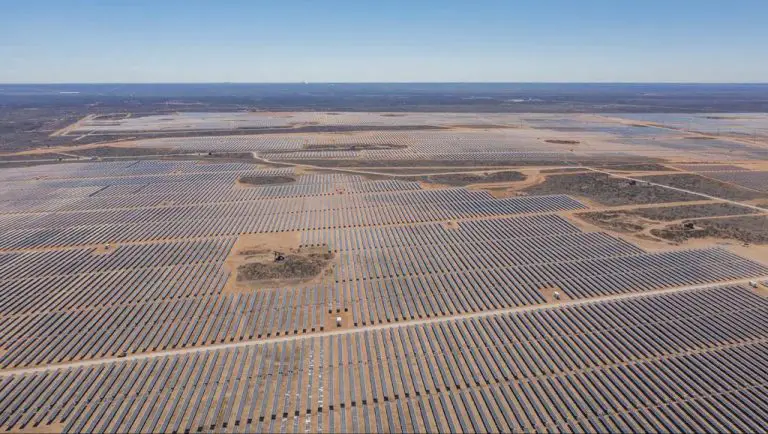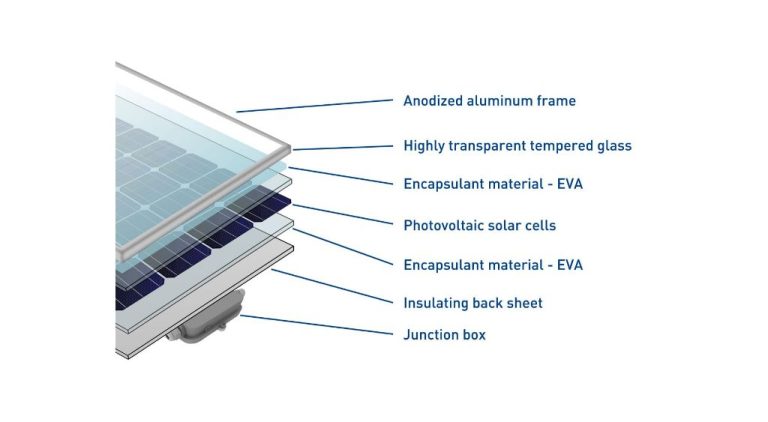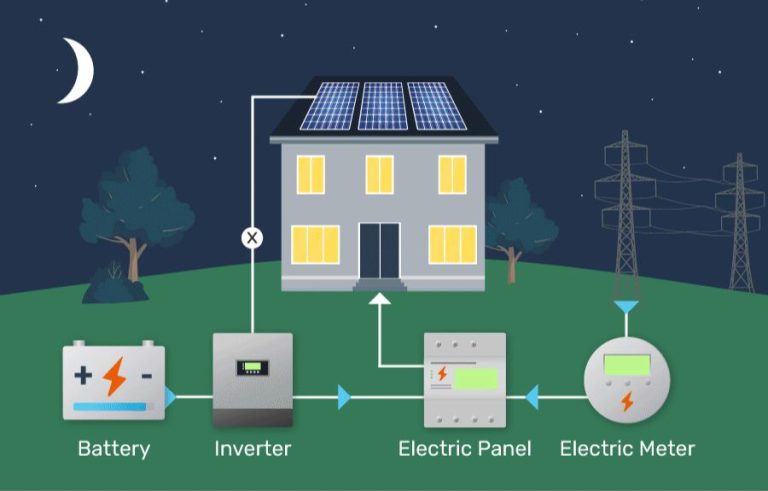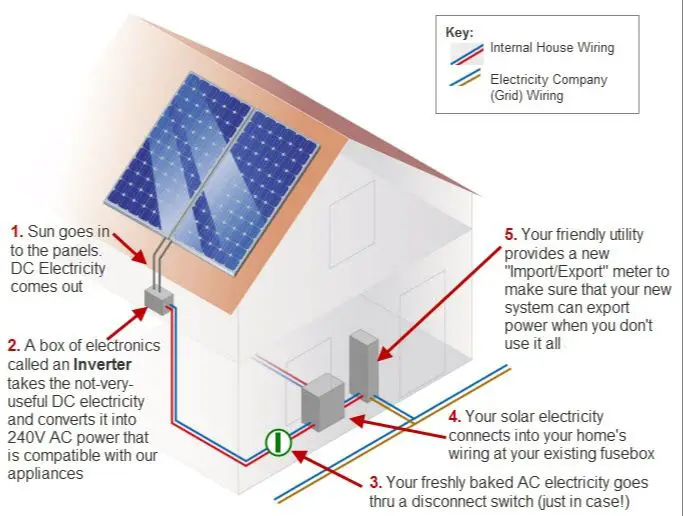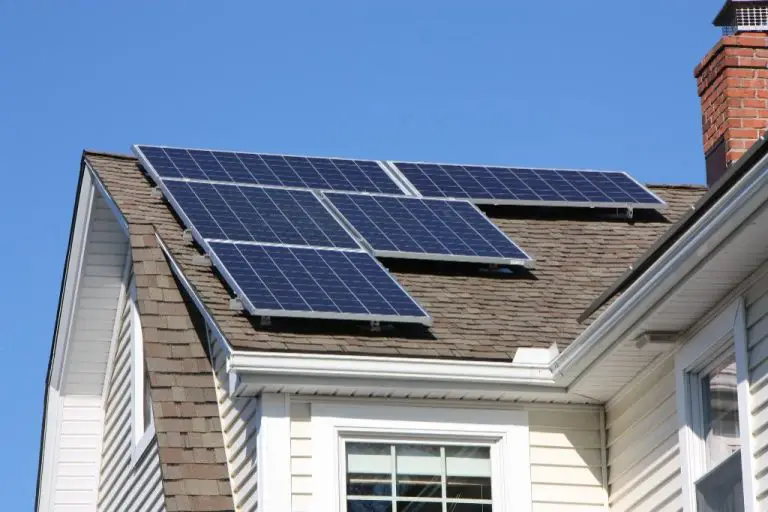Is A Passive Solar House Worth It?
What is a passive solar house?
A passive solar house is a home designed to utilize solar energy for heating and cooling by passively absorbing, storing, and distributing that solar energy. Passive solar design takes advantage of a building’s site, climate, and materials to minimize energy use, without relying on any mechanical or electrical devices (Wikipedia, 2022).
Passive solar homes are oriented to maximize solar gain during the winter to provide space heating, while minimizing solar gain in the summer to reduce cooling loads. This is often achieved through proper building orientation, large south-facing windows, thermal mass like concrete floors or walls to absorb and slowly release heat, and overhangs or other shading devices to block summer sun (Energy.gov, 2022).
Unlike active solar systems that use pumps and fans to circulate heated fluids or air, passive solar relies on passive heat flows by radiation, conduction, and natural convection to capture, store, and distribute solar energy. The key benefit is providing heating and lighting without any operating costs (Alternative-Energy-Tutorials.com, 2023).
The pros of passive solar houses
There are several benefits to passive solar house design. First, passive solar houses can drastically reduce heating and cooling costs. By taking advantage of sunlight, passive solar homes require very little energy for heating in the winter. Properly designed overhangs block summertime sun to keep passive solar homes cool in the summer as well [1].
Passive solar homes are also an excellent source of renewable energy. The sun’s energy is free, unlimited, and reduces dependence on fossil fuels for heating and electricity generation. Solar energy does not create any air pollution, greenhouse gases, or toxic waste. Using the sun for heating and lighting reduces the overall carbon footprint of a passive solar home [2].
In addition, passive solar home design can be more aesthetically pleasing with large, south facing windows that let in natural light. Materials like stone, tile, and hardwood hold heat from the winter sun and stay cooler in the summer. Window overhangs not only regulate sunlight, but also add visual interest to a passive solar home’s architecture and curb appeal.
The cons of passive solar houses
While passive solar houses have many benefits, there are some potential downsides to consider as well. One of the main cons is the higher upfront costs associated with building a passive solar home. The specialized design features, construction materials, and components like thermal mass and high performance glazing windows can increase the initial construction budget compared to building a conventional house.
Passive solar design also places some limitations on the orientation and layout of the house. The home needs to be optimized for solar gain, with the majority of glazing facing south or within 30 degrees of due south. This restricts the dimensions and footprint of the home. It also requires thoughtful solar-optimized landscaping to avoid shading the solar apertures (Nyln, 2022).
Additionally, passive solar systems do not work as efficiently in some climates. They are better suited for sunny, temperate climates that require heating more than cooling. In hot, humid climates, excessive solar gain can overheat homes and increase cooling costs. Passive solar also provides less benefit in cloudy northern climates with fewer winter solar hours (eHow, 2022).
Passive Solar House Costs
Building a passive solar house typically costs more upfront compared to a traditional house. According to this source, building a passive solar ICF house ranges from $100-$155 per square foot depending on the complexity of the design. In comparison, a standard ICF house can cost $50-$100 per square foot.
However, passive solar homes can achieve faster return on investment through energy savings. According to this analysis, a passive solar home in the Pacific Northwest achieved payback in just 7 years due to significant reductions in energy costs. The higher upfront investment results in long-term savings and increased home value.
Proper passive solar design can also help minimize the incremental cost increase compared to a traditional home. Strategies like optimizing solar orientation, effective insulation, and high efficiency windows are essential for maximizing returns. Although passive solar homes cost more initially, the long-term energy savings and added resale value make the investment worthwhile.
Passive solar house design considerations
There are several key design considerations when building an effective passive solar house according to Energy.gov:
Orientation
For maximum solar heat gain, the long axis of the house should face south, with the majority of windows facing this direction. East and west facing windows can provide additional solar gain but may also lead to overheating issues in summer according to Sustainability.williams.edu[1].
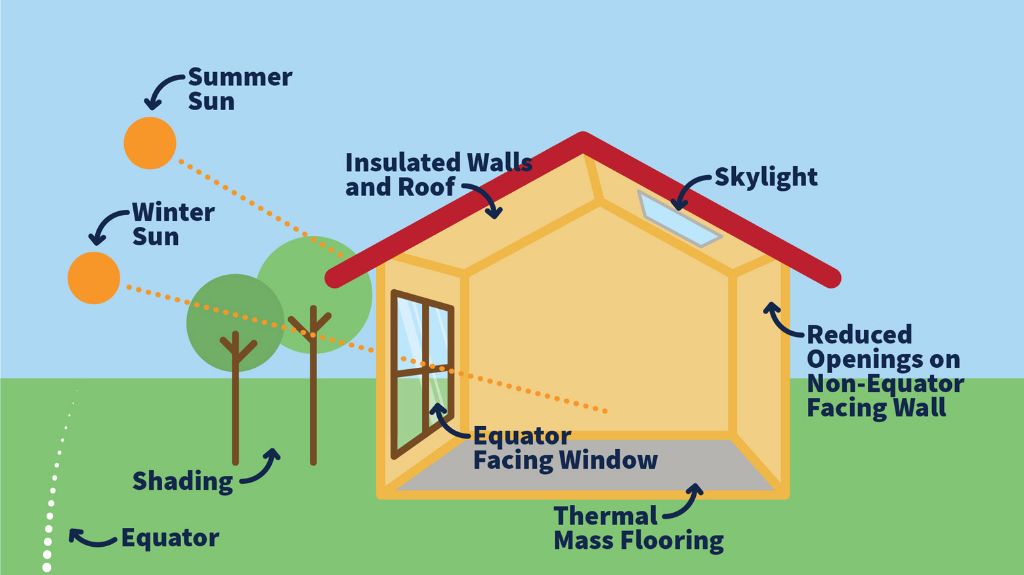
Overhangs
Properly sized roof overhangs should be used above south facing windows to block high summer sun but allow lower winter sun to enter and provide heating according to Energy.gov[2].
Thermal mass
Materials with high thermal mass like concrete, bricks, tiles and water barrels can absorb heat from the sun during the day and release it slowly at night when the temperature drops.
Insulation
High levels of insulation in walls, ceilings and floors is important to reduce heat loss from the building.
Glazing
South facing windows should ideally be double glazed to reduce heat loss while allowing solar gain. Insulated shades can help reduce summer overheating.
Examples of passive solar houses
Real-world examples of successful passive solar homes in different climates showcase the versatility and benefits of passive solar design. The Sundance House in Wyoming utilizes large south-facing windows, thermal mass walls, and solar tubes for heating, cooling, and lighting to achieve a 70% reduction in energy use (https://greenpassivesolar.com/gallery/). The Z-4 House in California integrates solar panels, solar water heating, and passive solar elements like roof overhangs to achieve zero net energy usage. In a cold Minnesota climate, the Third Ward Passive Solar House uses a greenhouse, masonry flooring, and smart siting strategies to stay warm in winter and cool in summer (https://www.energy.gov/energysaver/passive-solar-homes). These and many other examples demonstrate how passive solar techniques can drastically reduce energy costs across various regions and climates when implemented properly.
Climate Considerations for Passive Solar
Passive solar designs work best in climates with lots of sun exposure throughout the year. The southwest United States, including states like California, Arizona, New Mexico, and Texas, tend to be ideal for passive solar due to high amounts of direct solar radiation (source).
Cooler climates can also benefit from passive solar, but designs may need adjustments for seasonal sun angles and solar intensity. In northern states, passive solar can greatly reduce heating costs in the winter. However, passive solar is less effective for summer cooling in these regions (source).
Humid climates see diminished returns from passive solar since the cooling focus is usually on ventilation and dehumidification rather than insulation. But passive solar can still be worthwhile in these areas depending on the home design and orientation.
Overall, passive solar works well in most regions with strategic considerations for seasonal solar patterns and climate-specific priorities like summer ventilation or winter solar gain.
Maintenance and repairs for passive solar
Regular maintenance and minor repairs are important for ensuring passive solar houses continue operating efficiently. The main maintenance tasks involve cleaning dust buildup, checking insulation levels, and replacing glazing as needed.
Dust buildup on solar glazing surfaces like windows should be cleaned at least twice a year. Dust blocks sunlight from entering and reduces solar heat gain. Clean glazing maximizes solar collection (https://www.energy.gov/energysaver/passive-solar-homes).
Insulation levels in walls, attics, and foundations should be checked every few years for any settling or degradation. Maintaining proper insulation values prevents heat loss in winter and heat gain in summer (https://www.mdpi.com/1996-1073/13/11/2801). Settled insulation should be fluffed up or replaced as needed.
Glazing like windows may need replacing every 10-20 years. Newer glazing technologies can improve solar heat gain performance. Replacing fogged, cracked, or damaged glazing ensures optimum solar collection and thermal performance.
Alternatives to passive solar
While passive solar design can be an effective way to reduce energy usage in a home, there are some alternatives that accomplish similar goals. Here are a few of the top options:
Active solar systems involve solar panels and other mechanical devices to collect and distribute solar energy. Though more complex than passive solar, active systems can provide on-demand heating and electricity. They can be paired with batteries to store solar energy for use when the sun isn’t shining. Active solar allows more flexibility in home design since it doesn’t rely on orientation or windows for sunlight capture (Source).
Geothermal heating and cooling takes advantage of constant underground temperatures. A geothermal heat pump moves heat between the earth and a building. This allows efficient heating and air conditioning without combustion. Geothermal systems involve drilling wells and installing piping below ground. This makes installation more complex than passive solar. But geothermal can provide similar energy savings without relying on sunlight (Source).
For a more traditional home, buying carbon offsets can help reduce the climate impact. While the home itself doesn’t become more energy efficient, purchasing carbon offsets funds renewable energy projects to balance out emissions. Offsets let homeowners reduce their carbon footprint without renovating an existing home.
Is a passive solar house worth it?
After reviewing the pros and cons, the value of a passive solar house depends on your specific home situation. For some homeowners, the energy savings and environmental benefits make it well worth the extra costs and maintenance. For others, a passive solar home may not offer enough return on investment to justify the expense.
Passive solar homes make the most financial sense for those building a new home in a sunny climate. Incorporating passive solar design from the start is much cheaper than retrofitting an existing home. The climate is key – you’ll see far more heating and cooling savings in a desert environment than a cloudier region. Those with ample solar access on the building lot will benefit the most.
Homeowners who value energy independence and reducing environmental impact are likely to find passive solar worthwhile. While payback periods can be long, the satisfaction of generating your own energy from the sun proves worthwhile to solar advocates. Passive solar supports energy resilience and avoids fossil fuels for heating/cooling.
Those simply looking to save money may prefer renovations with quicker payback like insulation, efficient appliances, and air sealing. In some regions, active solar panels also offer faster payback than passive solar. Weigh your options carefully based on climate and goals.
Overall, passive solar houses require some extra investment but can pay off in energy savings and sustainability. Focus on solar access and climate to ensure your home can reap the full benefits.

